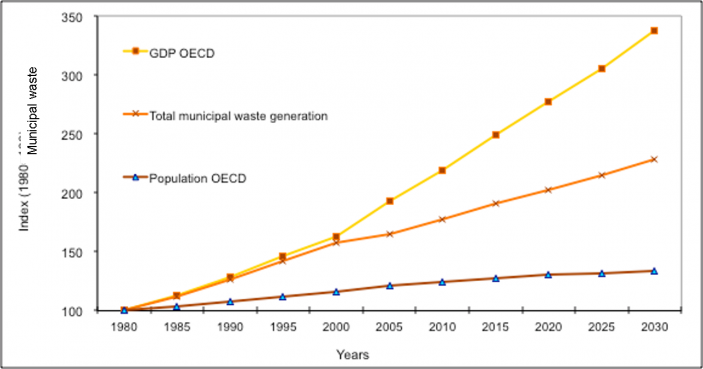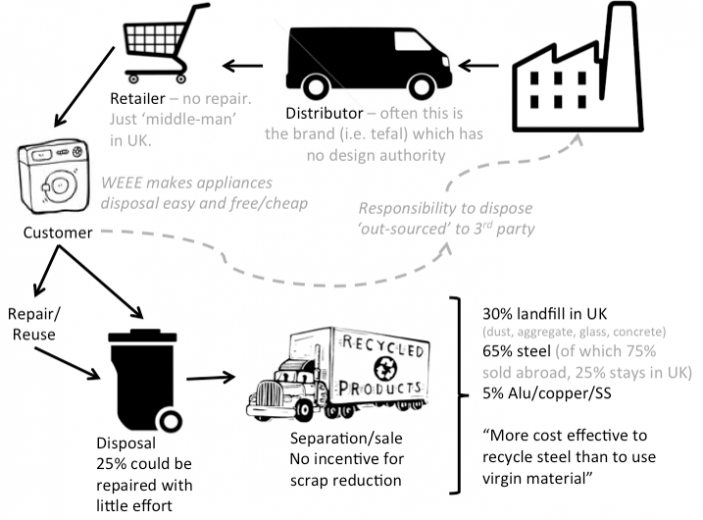Repair Services for Domestic Appliances
The Problem
Over the last 30 years, the replacement of failed domestic appliances with new ones has become a relatively inexpensive, quick and easy solution while repair has become a more costly and time-consuming option.
Around 25% of domestic appliances are disposed of in working, or near working, order of which only 7% are currently reused.
Throughout the supply chain there is much revenue to be gained from the repeat business and continued disposal of domestic appliances despite the very negative materials and energy consequences. Built-in obsolescence further ensures continued demand, with the damaging consequence of fuelling a throwaway culture.
The parties within this supply chain need to change mindsets and consider more sustainable products and processes that can be implemented in a responsible way, without stifling innovation.
Research aim
To significantly increase the number of domestic equipment that can feasibly be repaired.

Approach
The areas of research will focus on:
- Repair service contracts
- Design guidelines and material considerations which facilitate repair
- An information model to enable the repair/replacement/upgrade process
- Automation of repairs
- Standards and legislation

Outcomes
The outcomes of this research will seek to:
- Promote improved design protocols
- Improve product design and repairability
- Raise the profile of repair possibilities
- Enable repair as an easily accessible option
- Develop new, scalable & cost effective automated repair approaches
- Influence the domestic appliance industry to increase the number of domestic equipment that can feasibly be repaired.
Principal Investigator









